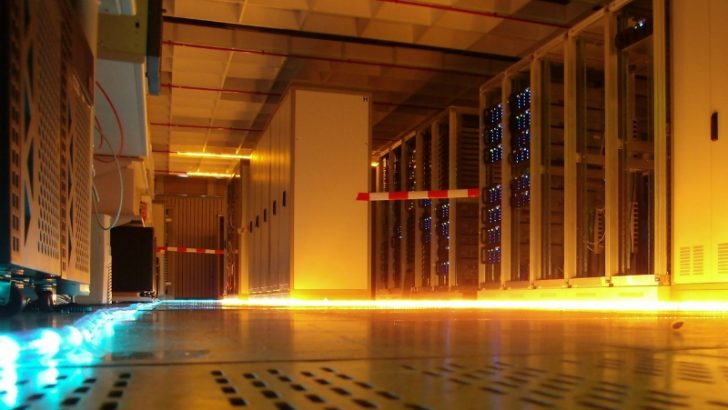
Dell believes it has identified a new market segment and today announced DSS (Dell Datacenter Scalable Solutions) to reach into this $6+ billion market. Brian Humphries, President, Dell Enterprise Solutions Sales and Strategy and Ashley Gorakhpurwalla, VP and general manager at Dell Server solutions led a webcast revealing the details
The sandwiched segment

In some ways this is a return to the roots of Dell and custom built PC’s, but rather than for individual users it is on a scale that is unprecedented. Over the last year Dell has been working with a small set of customers to develop solutions for them that fall between the two traditional markets of Enterprise and Hyperscale.
Humphries sees the enterprise market as a $40 billion market that is growing slowly each year. By comparison the Hyperscale market has grown to become a $9 billion market according to Humphries. Dell has been making some significant gains in the former with Humphries commenting: ”In servers we have shown consistent share gains versus HP/Lenovo over the last number of years and are now closer to being no 1 in the market than ever [before].”
Between these two segments is a new segment that Dell has identified which it believes that DSS will gain traction. The new line of business has been in stealth mode for the last year and has already attracted several customers, not just in the traditional enterprise areas of the US and Europe but more interestingly in China.
What is DSS
At first glance there is little difference between Hyperscale and DSS. Yet there is something that make this unique and possibly a greater risk that the more traditional markets. What the Dell team have managed to do is leverage their whole supply chain, from manufacturing through to distribution to develop innovation and flexibility for its customers.
For the end user, Dell provides a customised service that allows customers to choose the specification that they want. Dell have massively up scaled this for the DSS market. Dell is aiming for those enterprise that have a need for specific optimised compute requirements at scale. They have already worked with customers in oil and gas, SaaS and web tech companies but see wider applicability in telecommunications service providers, hosting companies, and research organisations as well.

Gorakhpurwalla revealed that even in stealth mode DSS has built up a customer base of more than 200 customers, which is set to double by the year end. He neatly summed up the vision for Dell DSS in saying:
“We are centred around an operating model built on flexibility and agility. We want to be able to say:.
“Yes to can we build you a new supply chain?
“Yes we can help you with the capital structure of your company by providing financial services that are very different from other IT vendors.
“Yes we can help you optimise the hardware for the exactly the unique configurations, the unique capabilities that you need within your companies.
“Yes we can build you a system quickly that meets yours needs that isn’t available on the market today.”
This four pronged approach should deliver some interesting challenges for the other hyperscale vendors. If hyperscale brings down the average cost of compute power, what Dell might be doing it slicing off the cream of that market in produced massive, specialised data centres for operations that need specific requirements. If your SaaS solutions use 10,000 servers in a hyperscale environment at a given price and Dell can optimise the configuration of those computers while delivering the same compute power for 20% less, then suddenly it will have an interesting proposition that will compete at a very lucrative end of the market.
A global SaaS provider, one of the early adopters has clearly been convinced of this new approach to compute power. The customer had begun looking for the right configuration for their software, but could not find it “off the shelf”. DSS was able to provide that, even down to reconfiguring storage configurations.
The question is: “Where does Dell see this market growing?” If the model works, and early indications (a 400% annual growth rate) suggest that it has traction, it may both attack the enterprise market as well as the hyperscale market. The ability to leverage its own supply chain, manufacturing capability and flexibility could see it grab a significant share of this new market before others can react.
It will be interesting to see how Lenovo combat this new approach and whether HP will be left behind. It may be that this specialised x86 compute is one that is able to fight against the growth of the mainframe/Linux hyperscale compute market as seen by the recent IBM announcement of LinuxONE and IBM’s move into x86 Linux with its Power Systems.
DSS will also provide a new filip for Poweredge servers that have been the Dell server backbone for so many years.
Finance and Security missing?
Neither the release nor the webinar revealed any information around the financial terms that Dell will be offering. However with the recent announcement around new financial terms for Cloud computing it can be assumed that these terms are also available for DSS customers.
The other component missing is security. There were no information around how Dell SonicWALL and the Quest security businesses are planning to offering anything within this space. Security is a key issue for hyperscale data centres and it should be a major concern for DSS customers. That no information was provided, despite asking the Dell a series of questions was disappointing.
Dell potentially have the capability to deliver solutions in this area and it is a shame that they could not take the opportunity of covering this major area of concern.
Conclusion
Humphries described this an exciting time in the industry and feels that Dell is best placed to take advantage. He commented “…in times like these as private company our focus is squarely centred on customers and partners. We can invest and take risks without the worrying about the vagaries of Wall Street.”
That Dell is able to innovate and look at a longer time horizon more than some of its competitors is something Dell will be hoping to turn into a massive advantage. It certainly allows it to take risks and as Humphries quoted Michael Dell “drive innovation for on behalf on our customers.”























